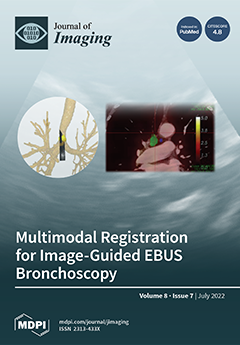We conducted a systematic review of recent literature to understand the current challenges in the use of optical see-through head-mounted displays (OST-HMDs) for augmented reality (AR) assisted surgery. Using Google Scholar, 57 relevant articles from 1 January 2021 through 18 March 2022 were
[...] Read more.
We conducted a systematic review of recent literature to understand the current challenges in the use of optical see-through head-mounted displays (OST-HMDs) for augmented reality (AR) assisted surgery. Using Google Scholar, 57 relevant articles from 1 January 2021 through 18 March 2022 were identified. Selected articles were then categorized based on a taxonomy that described the required components of an effective AR-based navigation system: data, processing, overlay, view, and validation. Our findings indicated a focus on orthopedic (
) and maxillofacial surgeries (
). For preoperative input data, computed tomography (CT) (
), and surface rendered models (
) were most commonly used to represent image information. Virtual content was commonly directly superimposed with the target site (
); this was achieved by surface tracking of fiducials (
), external tracking (
), or manual placement (
). Microsoft HoloLens devices (
in 2021,
in 2022) were the most frequently used OST-HMDs; gestures and/or voice (
) served as the preferred interaction paradigm. Though promising system accuracy in the order of 2–5 mm has been demonstrated in phantom models, several human factors and technical challenges—perception, ease of use, context, interaction, and occlusion—remain to be addressed prior to widespread adoption of OST-HMD led surgical navigation.
Full article






